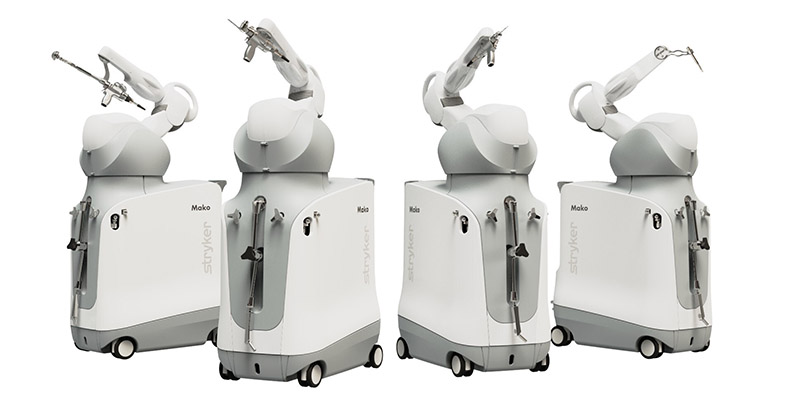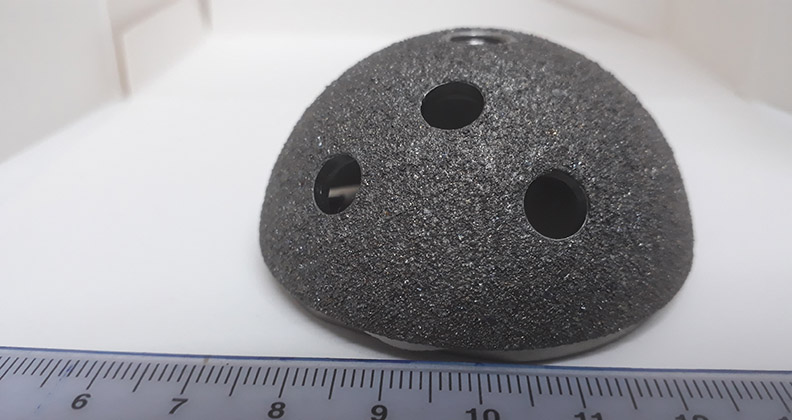
In September 2012, Amedica announced FDA 510(k) clearance to market 2nd-generation Silicon Nitride-based devices for cervical and lumbar interbody fusion. The clearance addressed design enhancements (threaded insertion feature, additional footprints) and elements to support minimally invasive and lumbar lateral interbody fusion approaches.
Further, the company announced an expansion of biomaterial claims for the Valeo Interbody Fusion Device based on data demonstrating superior new bone formation and osteointegration plus anti-infective properties of Silicon Nitride vs. PEEK and titanium.
We queried Amedica and its partners to understand these developments. Participants in the discussion were Eric Olson, Chief Executive Officer, President and Director of Amedica; Thomas J. Webster, Ph.D., Department Chair of Chemical Engineering at Northeastern University in Boston and Grant A. Skidmore, M.D., Private Practice Surgeon Specializing in Adult Neurosurgery.
Q: What is Silicon Nitride (Si3N4)?
A: Silicon Nitride is a strong, heat resistant material that can be manufactured into many different forms providing specific benefits for different types of surgical implants. Depending on the manufacturing process, the material can be very dense or porous, and the surface can be highly polished or texturized.
Silicon Nitride’s exceptional properties present opportunities to develop devices for spinal and orthopaedic procedures that may ultimately deliver improved patient outcomes. In comparison to poly-ether-ether-ketone (PEEK) and titanium (Ti) typically used in spinal fusion spacers, Silicon Nitride provides excellent mechanical support, higher wear resistance and durability, greatly improved imaging compatibility and the potential to reduce the risk of infection and promote bone growth.
Q:What are the benefits of Silicon Nitride compared to traditional devices using Ti or PEEK?
A: Silicon Nitride’s properties offer four key benefits when compared to other traditional devices such as PEEK or Ti.
- Antimicrobial: Treating implant-related infections is costly and generally requires repeat surgery that could result in extended disability and suffering. Silicon Nitride’s hydrophilic (high-energy surface) properties inhibit bacteria growth, reducing the risk of infection.
- New Bone Growth: The hydrophilic properties of Silicon Nitride help promote bone on-growth and osteogenerative proteins.
- Reliability: 100 times stiffer than cancellous bone and 60 times stiffer than PEEK and Femoral Ring Allograft, Silicon Nitride offers increased durability and resistance.
- Enhanced Imaging: Silicon Nitride is radiolucent with clearly visible boundaries that produce no MRI or CT imaging artifacts—a major advantage for intraoperative implant placement and post-op assessment.
Q: Dr. Webster, can you explain the significance of the recent Acta Biomaterialia and International Journal of Nanomedicine studies?
A: These two studies showed the superior osseointegration and bacterial-resistant properties of Amedica’s Silicon Nitride biomaterial when compared to PEEK or Ti. The Acta Biomaterialia study specifically demonstrated that the amount of regenerated bone associated with Silicon Nitride implants was essentially two to three times that of the other two implant materials at three months post-surgery. What is significant about the Acta Biomaterialia study is that we actually placed bacteria on the samples before implantation, to model an infection. Thus, the fact that bone grew the most (and at all) on Silicon Nitride is quite an accomplishment.
The International Journal of Nanomedicine study demonstrated that Silicon Nitride is less vulnerable to bacterial colonization than PEEK and Ti. This study also illustrated a mechanism concerning why bacteria growth is inhibited on Silicon Nitride by demonstrating a different protein adsorption profile than PEEK and Ti. Specifically, Silicon Nitride, due to its chemistry and topography, promoted the adsorption of proteins from plasma known to inhibit bacteria functions and increase bone formation. Collectively, the studies suggest improved bone growth and decreased infection on Silicon Nitride which can be achieved without resorting to use of antibiotics or bone growth factors. Ask anyone who has had an infected implant—this is a big deal.
Q: Dr. Skidmore, can you describe how the material behaves?
A: Silicon Nitride is not only very interesting, but also unique in that it behaves actively in the fusion process. That is to say, instead of being a passive support structure, Silicon Nitride, by virtue of its surface features and isoelectric point, attracts early protein adherence to its surface. Protein adherence is essential as a first step in the attraction and subsequent integration of bone cells which will lead to fusion. Clinically, we are seeing earlier bone formation evident radiographically and no migration of the device consistent with quicker healing and fusion.
Q:Dr. Skidmore, what would you like surgeons to know about Silicon Nitride?
A: Surgeons have searched for materials and new design structures to improve patient outcomes for years. Silicon Nitride has a proven track record to help improve patient outcomes. The material offers a variety of imaging benefits and can be manufactured to allow for intraoperative visualization while also enhancing the CT and MRI evaluation of bony and soft-tissue structures, which helps surgeons more effectively evaluate the bone/implant interface. Finally, the material behaves much like PEEK and Ti, allowing for a minimal learning curve for surgeons.
The same properties that appear to be responsible for early bone cell adherence appear to impart an antibacterial property to the material. The scientific data recently published and subsequently presented as a poster at the Congress of Neurological Surgeons and presented orally at the North American Spine Society show its antimicrobial behavior. Again, early protein adherence to the surface perhaps prevents a biofilm formation, which is an early progenitor of an infectious process or bacterial colonization. This imparts a distinct advantage to this material over both PEEK and titanium, which have been commonly used in the past and makes this a clearly distinctive and beneficial material for use in this space.
Q: Eric Olson, how might Silicon Nitride change the standard of patient care? What lies ahead?
A: With recent changes in Federal reimbursement for Medicare and Medicaid patients, which will provide global reimbursement for overall outcomes instead of a strictly fee for service, physicians and hospitals have become focused on finding methods to improve their surgical outcomes. Recent in vitro and in vivo studies have demonstrated that Silicon Nitride is osteopromotive and anti-infective, which should help reach these improved patient outcome objectives.
The use of Silicon Nitride products, in a clinical setting, should allow hospitals and surgeons to benefit from higher reimbursements for spinal fusion procedures, because of the reduced risk for infection and increased potential for improved fusion rates.
We are evaluating the application of Silicon Nitride in many other types of medical devices including dental implants and suture anchors, and could potentially develop anti-infective Silicon Nitride coated metal implants. This technology could penetrate the total joint, spine and dental markets, improving patient outcomes.
Eric Olson is the Chief Executive Officer, President & Director of Amedica. His prior positions include Executive Vice President of Sales & Marketing for Axial Biotech, Vice President of Sales & Marketing for Facet Solutions and senior business development, sales and marketing positions with companies including Medtronic Neurological and Smith & Nephew.
Dr. Thomas J. Webster is the Department Chair of Chemical Engineering at Northeastern University in Boston. His research explores the use of nanotechnology in numerous applications.
Dr. Grant Skidmore specializes in adult neurosurgery at Neurosurgical Specialists, Inc., an all-encompassing progressive neurosurgical practice.




